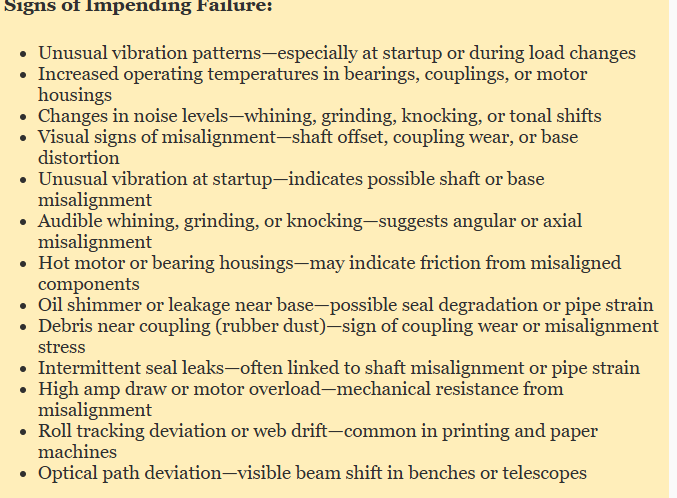Bearing Plasticity: The Case of the Shattered Shaft
- Kerin Epperly, CLSSMBB

- Oct 10
- 3 min read

Imagine a world where everything is rigid, unyielding. No give, no flex, just brittle, unforgiving hardness. Sounds secure, right? In the realm of machinery, that often spells disaster. While we demand strength and durability from our components, there's a secret superpower hidden within many critical parts: plasticity. And when that power is lacking, you've got a recipe for mechanical mayhem, a whodunit of shattered steel and seized gears. Welcome to the thrilling world of bearing plasticity, where a little 'give' can prevent a lot of 'take'.
What Exactly is Plasticity, and Why Does it Matter to a Bearing?
At its heart, plasticity is a material's ability to deform permanently without fracturing. Think of Play-Doh or bending a paperclip; it changes shape and stays that way. For a bearing, which constantly deals with immense loads, friction, and heat, plasticity isn't about shapeshifting whimsically. It's about microscopic, controlled yielding under stress. A bearing with adequate plasticity can absorb sudden shocks, redistribute loads, and subtly adapt to minor misalignments or temporary overloads. It's the unsung hero that prevents a small stress concentration from spiraling into a catastrophic crack.
The Crime Scene: The Case of the Frozen Turbine
Our scene: the heart of the Grand River Power Plant, specifically Turbine Unit 7. The air usually hums with controlled power, but today, a chilling silence has fallen, broken only by the frantic whispers of engineers. Detective Inspector Anya Sharma, a forensic engineer with a knack for mechanical mysteries, surveys the wreckage. The turbine, a behemoth of steel and copper, stands petrified, its once-spinning shaft a jagged, twisted monument to violent failure. Shards of metal litter the floor, reflecting the emergency lights like macabre confetti.
Turbine Failure Scene
“Initial reports?” Sharma barks, her gaze fixed on the gargantuan main bearing housing.
“Catastrophic failure, Inspector,” replied a nervous plant manager. “Sudden seize-up. Massive vibrations preceding it, then a sickening crunch. The whole unit went down.”
Sharma’s eyes narrowed. “Show me the bearing. I have a hunch the primary suspect isn't friction, nor lubrication… at least, not in the way you think.”
The Autopsy: Cracking the Code of the Catastrophe
Under the harsh glare of the inspection lamps, the main bearing, or what was left of it, revealed its grisly secrets. Instead of the smooth, polished surface expected of a vital component, it was a landscape of jagged edges and micro-fractures. The metallic structure looked almost crystalline, alarmingly brittle. Sharma ran a gloved finger over a particularly nasty fracture line.
“The material… it’s too hard,” she murmured, more to herself than to the onlookers. “No, not too hard in the traditional sense, but lacking in its capacity to yield. It’s failed in a brittle fashion, shattering instead of deforming.”
Her team of specialists worked quickly, taking samples for metallurgical analysis. The reports came back damningly clear: the bearing material, chosen perhaps for its supposed ‘superior’ hardness and wear resistance in a misguided effort to cut costs or push performance limits, had insufficient plasticity for the application. Under the relentless, dynamic loads of the turbine, micro-stresses accumulated. Without the ability to plastically deform and dissipate those stresses, the material reached its elastic limit and then… boom. Brittle fracture. A catastrophic cascade of failure that ripped through the entire assembly.
The Verdict: Plasticity Saves Lives (and Turbines)
Detective Sharma closed her notebook. “The root cause, gentlemen, was a lack of adequate plasticity in the main bearing. It was expected to perform under conditions that demanded a certain degree of elastic and plastic deformation, but the material simply wasn't up to the task. It couldn't ‘roll with the punches,’ literally.”
This isn't just a tale of a fictional power plant. It's a fundamental principle in engineering: selecting the right material with the appropriate balance of properties is paramount. For bearings, especially those under heavy, dynamic, or impact loads, sufficient plasticity is not a luxury; it's a necessity. It’s what allows them to survive cyclic fatigue, absorb stress spikes, and maintain their integrity over millions of rotations.
So, the next time you hear a machine purring smoothly, remember the unsung hero, plasticity, working tirelessly within its bearings. It's the silent guardian against catastrophic failure, proving that sometimes, being a little ‘flexible’ is the strongest trait of all.





Comments